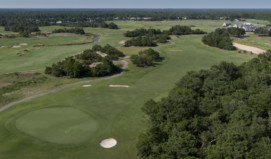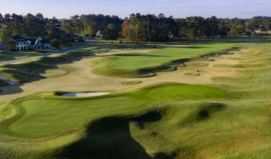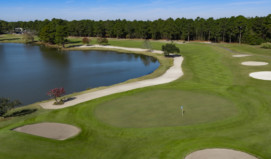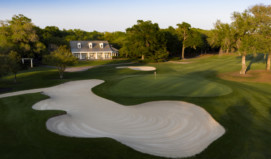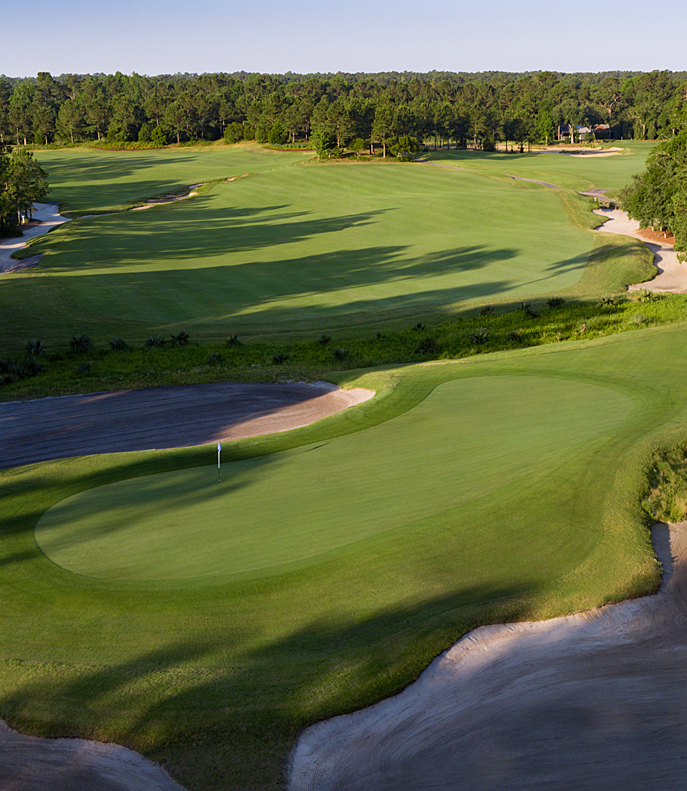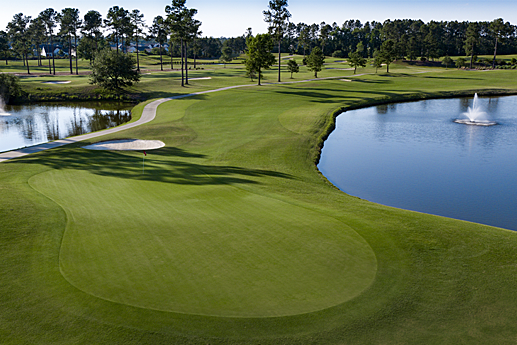Course architects know that finding the right mix of wins and losses is exactly how to grow respect.
In many ways, laying out a great par 5 is sort of like being in charge of a sports book’s betting lines. Set the bar too high or low, and you won’t find the perfect medium.
The four designers below all did that perfectly on certain holes of their Myrtle Beach-area golf course designs, pairing trouble with possibilities for huge success.
Calling these four holes “risk-reward” doesn’t seem to do them justice. More than that, they can be better described as the ones that separate the contenders from the pretenders.
LEGENDS GOLF & RESORT HEATHLAND COURSE NO. 13 (pictured right)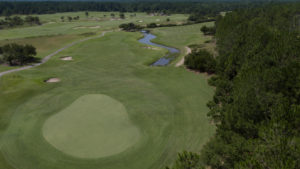
The par-71 Heathland, designed by Tom Doak, includes only one par 5 on the back nine. On the No. 13 – which stretches to 539 yards from the backs but plays an equally impressive 521 from the whites – players usually try to do too much. A diagonal stream shapes a would-be straight fairway into one that then goes parallel to the water. Flying the water in one isn’t possible for non-pros; but even getting across in two isn’t enough. Leaving your ball just across to the second tier of fairway could leave as much as 150 yards to a slender green. Considering the stream, that’s not a bad place to be.
LONG BAY CLUB, NO. 15 (top photo)
Want to know what it feels like to drop twice into the same body of water on the same hole? Thanks to a slender-yet-lengthy stream that starts at the green, flows down the right side of the 449-yarder (from the whites), cuts across at the midway point and then greets players to the left of the tee box, you may just find out. Carrying the midway point of Jack Nicklaus’ design here is not impossible; it requires roughly 260 yard to do so dead center. Make that distance, and then avoid the stream ahead on the second shot, and putting for eagle or birdie is doable. Miss twice, and you’re figuring how how to squeeze a double digit into the box.
MYRTLE BEACH NATIONAL SOUTHCREEK NO. 2
With a max distance of 501 yards (471 from the whites), this hole at SouthCreek seems like a perfect chance to go after the green in two. You should give Arnold Palmer more credit. For every player who sets foot on second-shortest par 5 thinking glory is in the cards, another is left cringing. A lengthy pond up the left side swallows its share of tee shots. Following a drop there, a trio of perpendicular bunkers then cut the distance between there and the green in half. The combination leaves many players with 100-plus-yard sand shots to the green on their fourth stroke.
WILLBROOK PLANTATION NO. 15 (pictured right)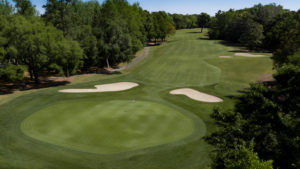
Dan Maples didn’t necessarily lay out Willbrook as a risk-reward course; rather, it was about not taking chances and taking what is given. The 538-yard par 5 on No. 15 is a great example of just that. On the hole, getting too aggressive off the tee puts a deep bunker off to the left or a thick tree line up the right in play. And did we mention the marsh area that cuts the fairway in half? Get across that sans drop or sand, and the chances for a respectable number increase dramatically.

